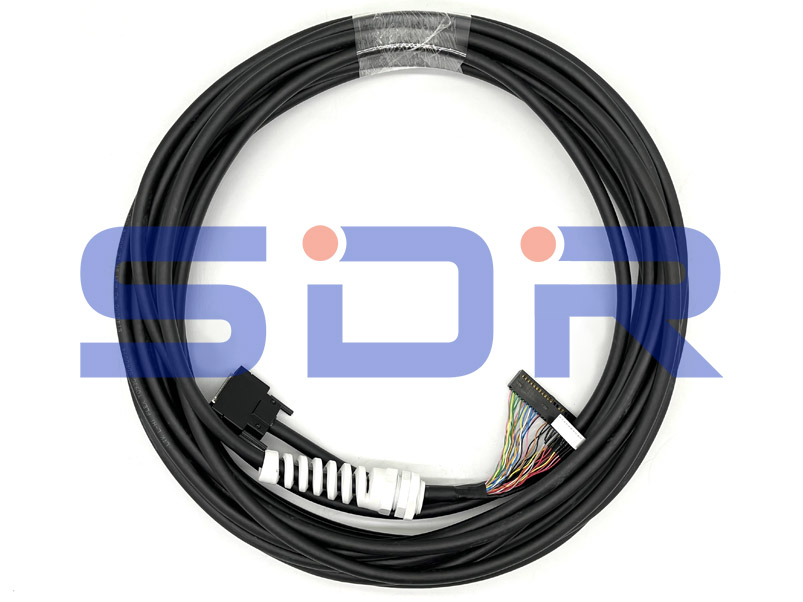Kawasaki POWER CABLE is a high-performance power cable used in a wide range of applications in industrial facilities, power systems, building construction and transportation. To ensure the reliability and long life of the cable, proper installation and operation is essential.

Preparation before installation
1. Confirm cable specifications Before installing:Kawasaki Power Cable, confirm that the specifications and type of cable meet the design requirements. This includes parameters such as conductor cross-sectional area, insulation class, rated voltage, and cable length.
2. Check Cable Appearance:Before installation, the appearance of the cable should be carefully inspected to ensure that there is no mechanical damage, cracks or other defects. If damaged cables are found, they should be replaced immediately to avoid affecting subsequent installation and use.
3. Determine the wiring path:The wiring path of the cable should be planned before installation to avoid direct contact between the cable and heat sources, chemicals or mechanical equipment. The path should be as simple as possible, avoiding unnecessary bending and winding to minimize mechanical stress on the cable.
4. Prepare tools and equipment:Ensure that the tools and equipment required for installation are complete, such as cable cutters, wire strippers, terminals, insulating tape, trunking and cable fixings. At the same time, construction personnel should wear appropriate personal protective equipment, such as insulated gloves and goggles.
Cable laying and fixing
1. Laying of Cables:When laying cables, excessive stretching of cables should be avoided. It is usually recommended that the tension should not exceed 10 times the weight of the cable to prevent conductor damage. Cables should be straightened as much as possible within a straight distance, and if bending is required, the bending radius should be at least 12 times the outer diameter of the cable to reduce the mechanical stress on the cable.
2. Cable fixing:After the cable is laid, the cable should be fixed in a predetermined position using suitable fixings (e.g., cable clamps, straps or troughs). The spacing between fixing points should be reasonable to prevent the cable from sagging due to self-weight. For vertically installed cables, the fixing points should be closer together to support the weight of the cable.
3. Prevent cable damage:When traversing walls, floors or other obstacles, the cable should be wrapped with protective tubes or trunking to prevent friction and mechanical damage. At the same time, contact between the cable and sharp objects should be avoided.
Connection and Termination of Cables
1. Cutting and stripping of cables:Use special tools to cut cables to ensure a smooth cut. When stripping the cable, damage to the conductor and insulation layer should be avoided. Normally, the stripping length should be adjusted according to the specifications of the terminals to ensure good contact.
2. Cable connection:The connection between the cable and the terminal block should be firm and the contact resistance should be low. For connection points that need to be welded, suitable welding materials and processes should be used to ensure the conductivity and mechanical strength of the joint. After the connection is completed, the joints should be insulated using insulating tape or heat-shrink tubing.
3. Grounding:According to the design requirements of the power system, the metal sheath or armor layer of the cable should be grounded to ensure the safe operation of the power system. The grounding conductor should be made of materials and sizes conforming to the specifications and firmly connected to the grounding terminal.
Operation and Maintenance of Cables
1. Regular inspection:During the use of cables, their appearance and joints should be checked regularly to ensure that there is no mechanical damage, insulation aging or other abnormalities. Especially in harsh environments, the frequency of inspection should be increased.
2. Prevent overloading:The cable should be used in strict accordance with its rated current and voltage to prevent overloading. Overloading will cause the cable to heat up, reduce its service life, and even cause fire and other safety accidents.
3. Troubleshooting:If the cable fails, it should be immediately disconnected from the power supply and inspected and repaired by professionals. When replacing cables or connectors, the original design specifications should be followed to ensure that the performance of the repaired cable is not affected.
4. Environmental protection:For exposed cables, necessary protective measures should be taken, such as the use of waterproof casing, protective cover, etc., to avoid cable damage caused by environmental factors (such as water, chemicals, direct sunlight, etc.).
Installation and operation of Kawasaki Power Cable requires strict compliance with relevant technical specifications and safety standards. Correct installation, connection and maintenance can effectively extend the service life of the cable and ensure the stable operation of the power system. In practice, it is important to pay attention to the safety and durability of the cable to ensure its excellent performance in various environments.